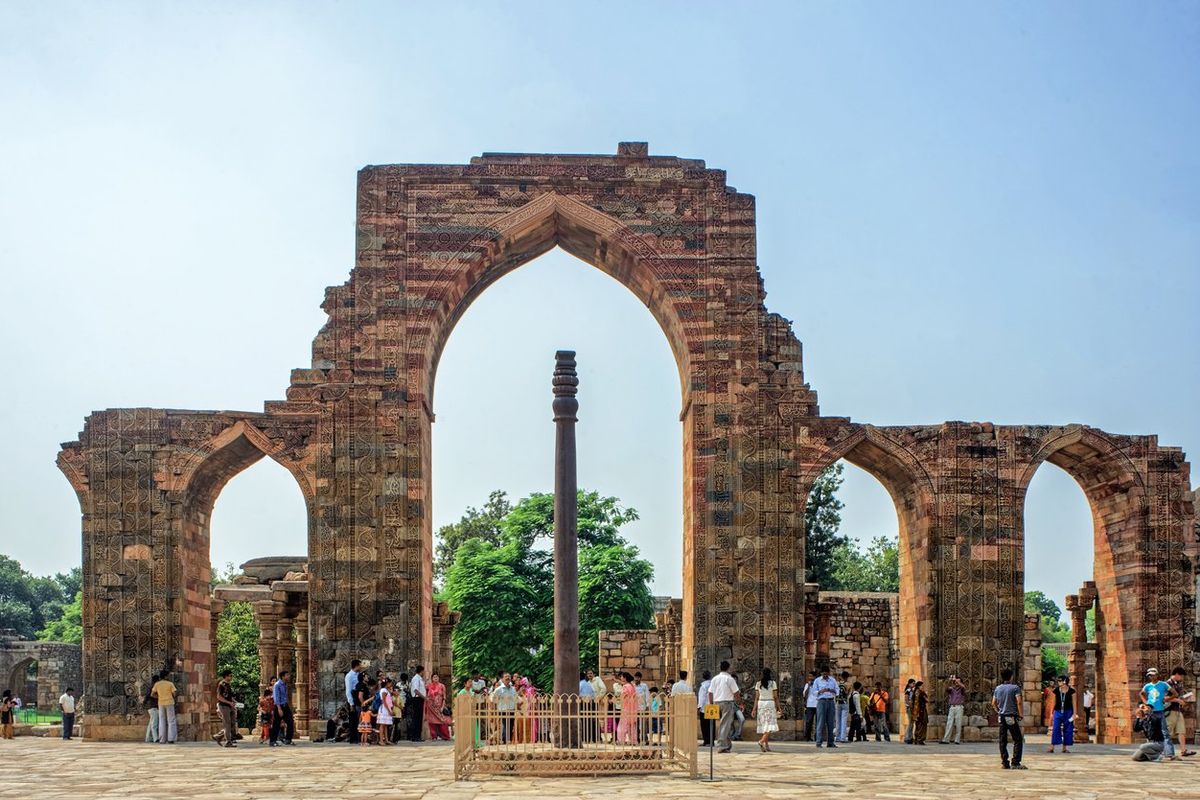The puzzle surrounding an extremely impressive metal column that has baffled experts for more than a century has finally been cracked.
In spite of being constructed from iron, it never corrodes.
This contravenes everything we know about the metal, which is notoriously prone to the effects of the elements – developing a rusted, reddish-brown patina at the slightest trace of moisture.
?
Let's just say neither theory has worked out. It's all down to the ancient Indians' expertise that the structure's power comes from.
Scientists carefully examined the pillar to determine the intricate science at play beneath its unremarkable grey exterior.
Yes, they revealed the way in which the marvel came to be.

The colossus stands approximately 7.3 metres high and measures 41.6cm in diameter. It gradually narrows to about 30.5cm at the top, where an ornate feature is located.
reports.
Describing the enormous monument in approximately 1333 Ad, the famous Moroccan explorer Ibn Battuta allegedly wrote: “In the centre of [Delhi] mosque is the awe-inspiring column of which nobody knows of what material it is constructed.
“One of their learned men told me that it is called ‘Seven Metals’, which signifies ‘seven metals’, and that it is comprised of these seven. A portion of this pillar, of a finger's length, has been polished, and this polished segment radiates a dazzling luster. The iron makes no impression on it.”
Several inscriptions have been engraved onto its surface, the oldest of which – a six-line poem – is written in ancient Brāhmī script and mentions a king called Chandra.
Experts believe the poetic style and form used in this Sanskrit inscription are similar to those often employed during the reign of King Chandragupta II Vikramaditya, who was in power from 375 to 415 AD in the Gupta dynasty's territorial control.
The inscription describes the king as a devoted follower of Vishnu, and states that he erected the pillar to the god on a hill known as Viṣṇupada, which is literally the "hill of the footprint of Viṣṇu".
The area where this hill is situated remains a topic of controversy, although it is generally believed to be located among the Udayagiri cave temples in Madhya Pradesh.
What contributed to the pillar's remarkable durability?
Experts at the University of Delhi wrote: "The pillar, notable for its exceptional craftsmanship, perfect finish and corrosion-resistant properties, is a prominent landmark showcasing an undeniable achievement in ancient Indian metallurgy and engineering."
The paper explains that India's ancient metalworkers refined their iron items to an impressive 98 per cent accuracy.
.
"The heat employed during these processes wasn't hot enough to completely melt the metal, so instead, it was extracted as a "soft, spongy mass" which was hammered to be shaped into the desired objects," the study's authors explain.
BITs of this porous iron were then spread out and repeatedly beaten to isolate the fluidic slag (mineral impurities), forming it into a series of “pancake” shapes.
"The heated iron plates were then layered on top of each other, and the two were connected using hand-held hammers struck with great force," they write.
Scientific examination of this forged iron structure showed a striking combination of properties, which made the metal highly resistant to corrosion.
Additionally, the hammering did not take out the slag uniformly - it left behind a patchwork of small, phosphorus-rich particles scattered throughout the iron.
This led to the formation of an electrical pathway, resulting in a sequence of chemical reactions, the researchers claim.
"The corrosion-resistant property of the sample of the Iron Pillar in Delhi was mainly brought about by the method of its manufacturing, which resulted in a high number of slag inclusions dispersed in three dimensions throughout the metal," the study concludes.
The P (phosphorus) in FePO4 (ferric phosphate) is oxidised to phosphate which works as an inhibitor and encourages the development of protective oxide films to prevent corrosion.
“Application of a protective coating to the pillar leads to a reduction in corrosion rate from 0.395 mm to 0.040 mm per year.”
So there you have it, the mystery solved! But wouldn't Aliens have been more exciting?
Sign up Not interested?
How to join The Indebo's free WhatsApp channel
Have your say in our news democracy. Join the discussion about this article in the Comments.
